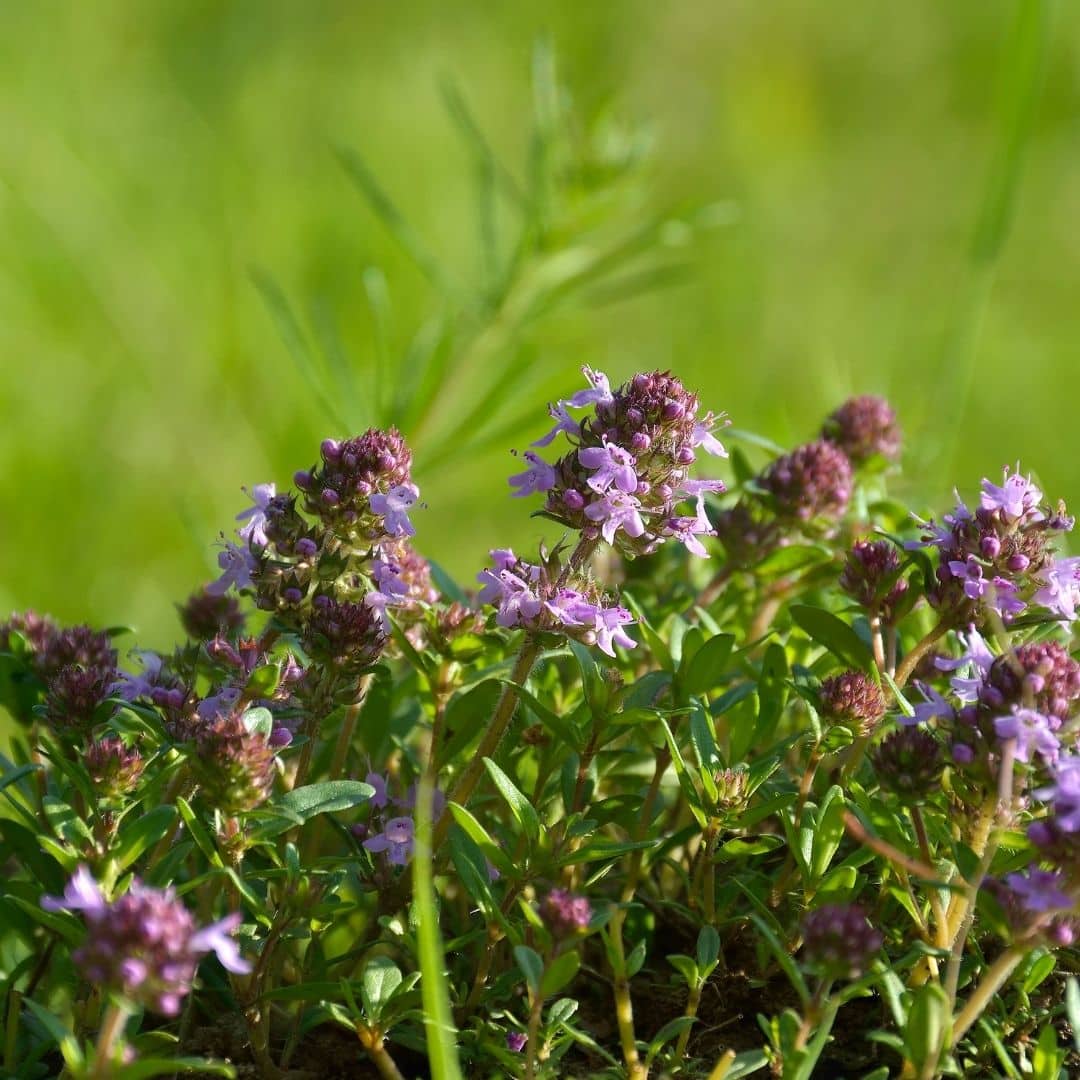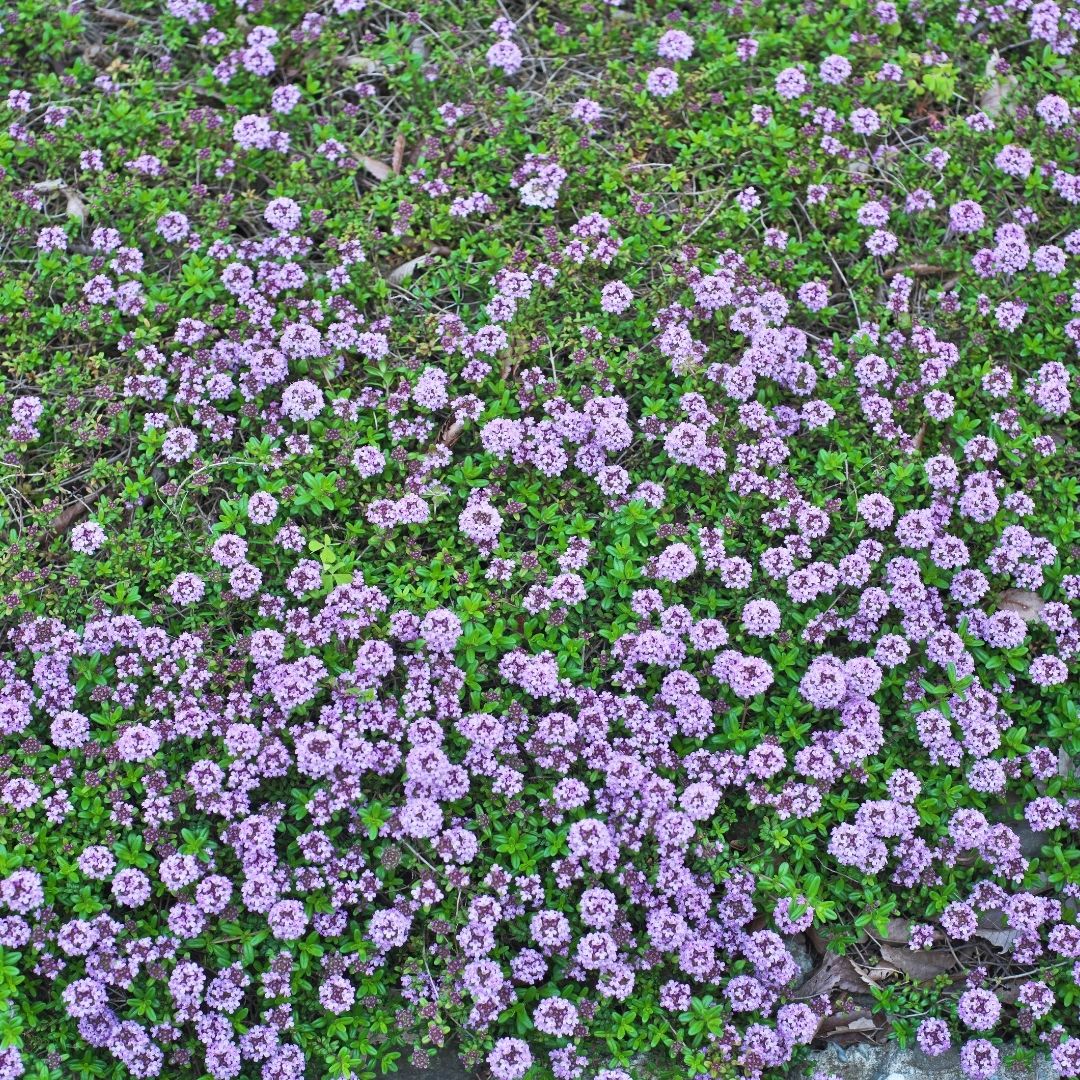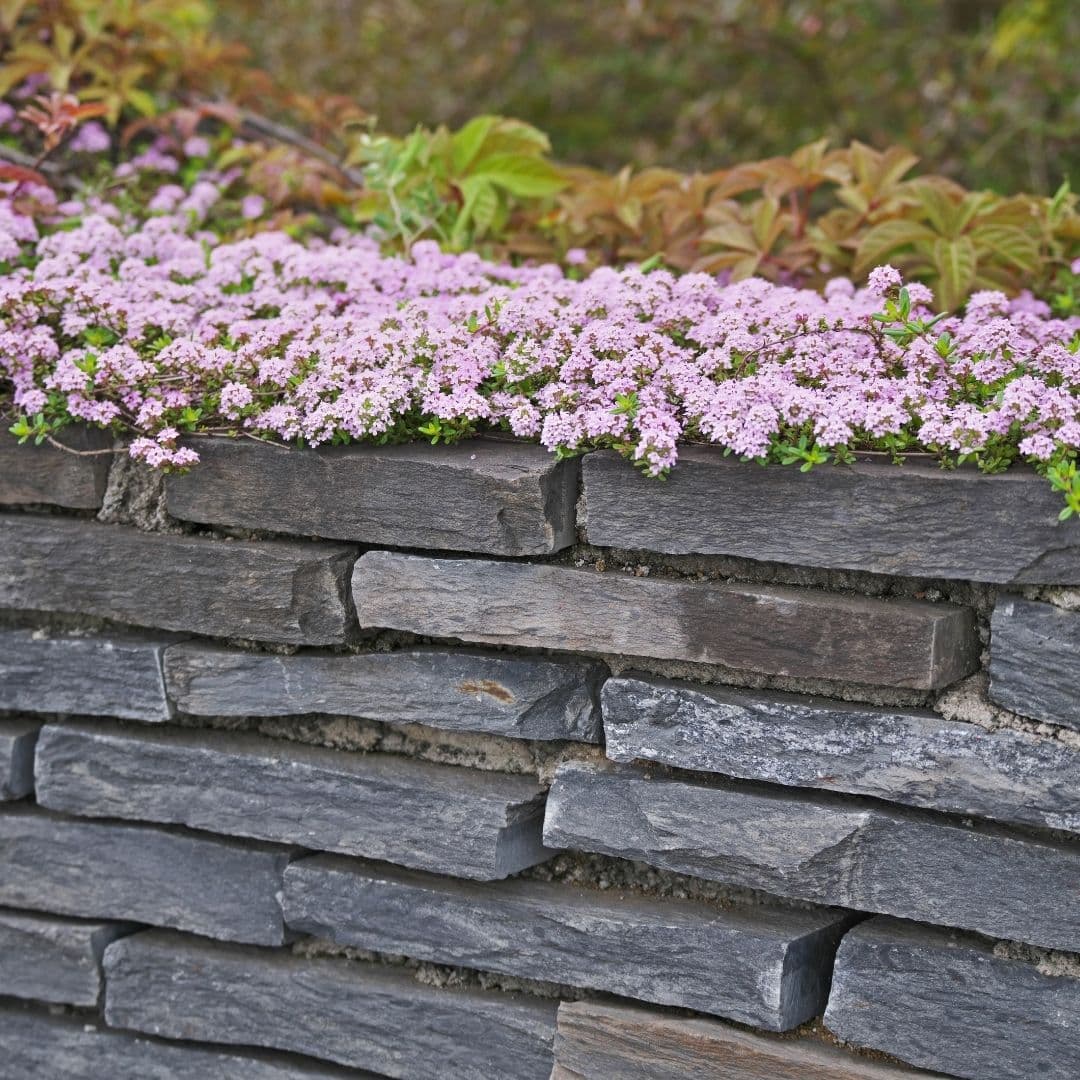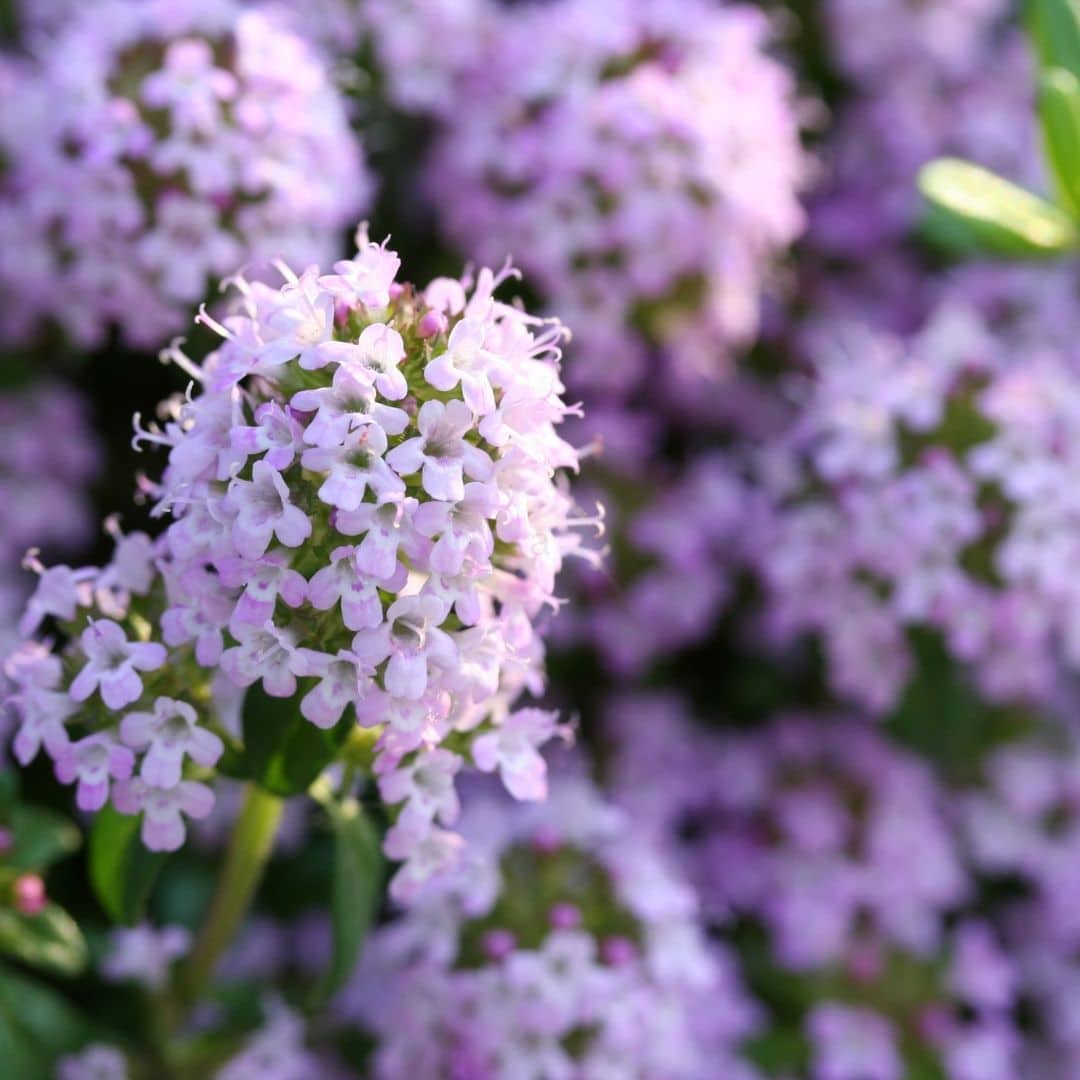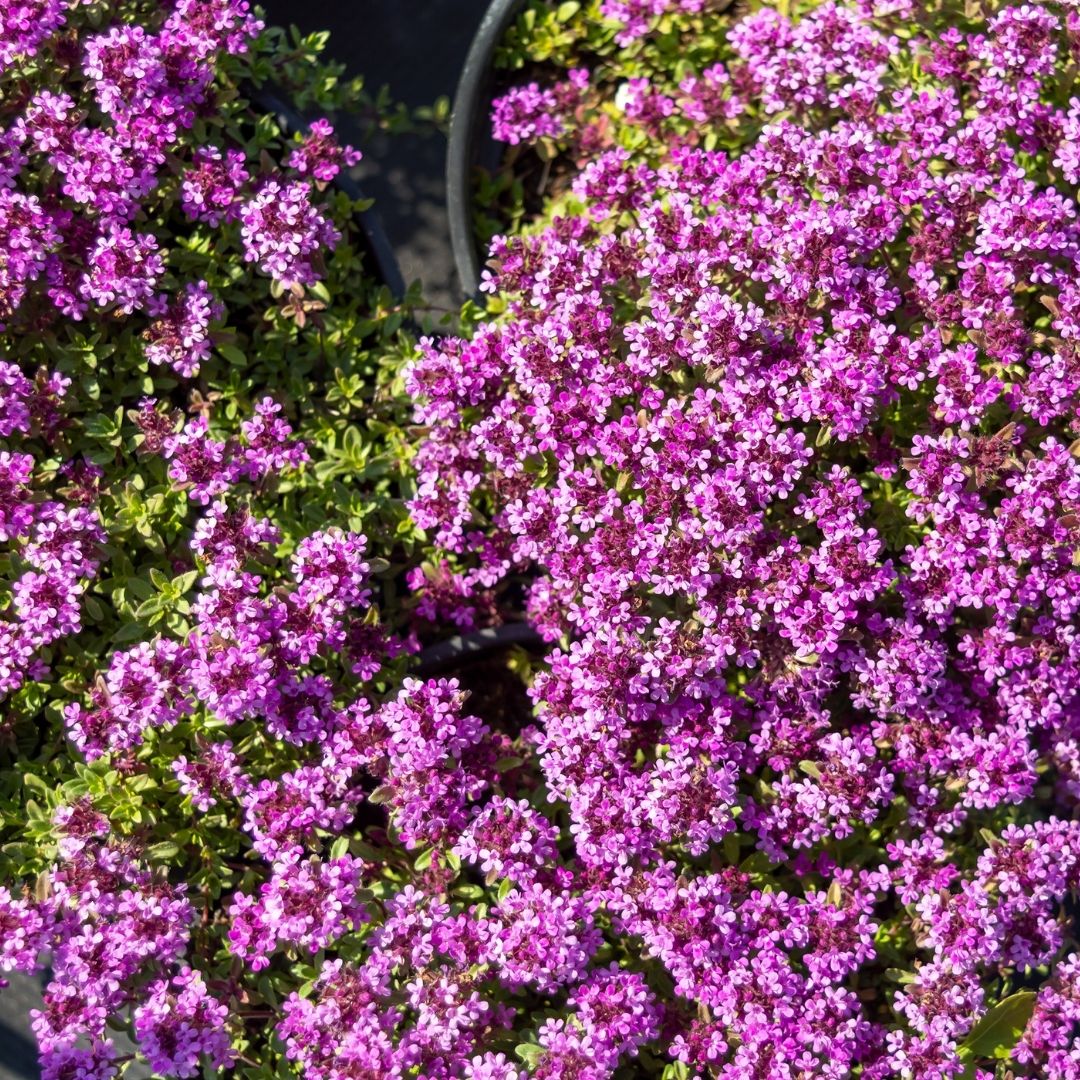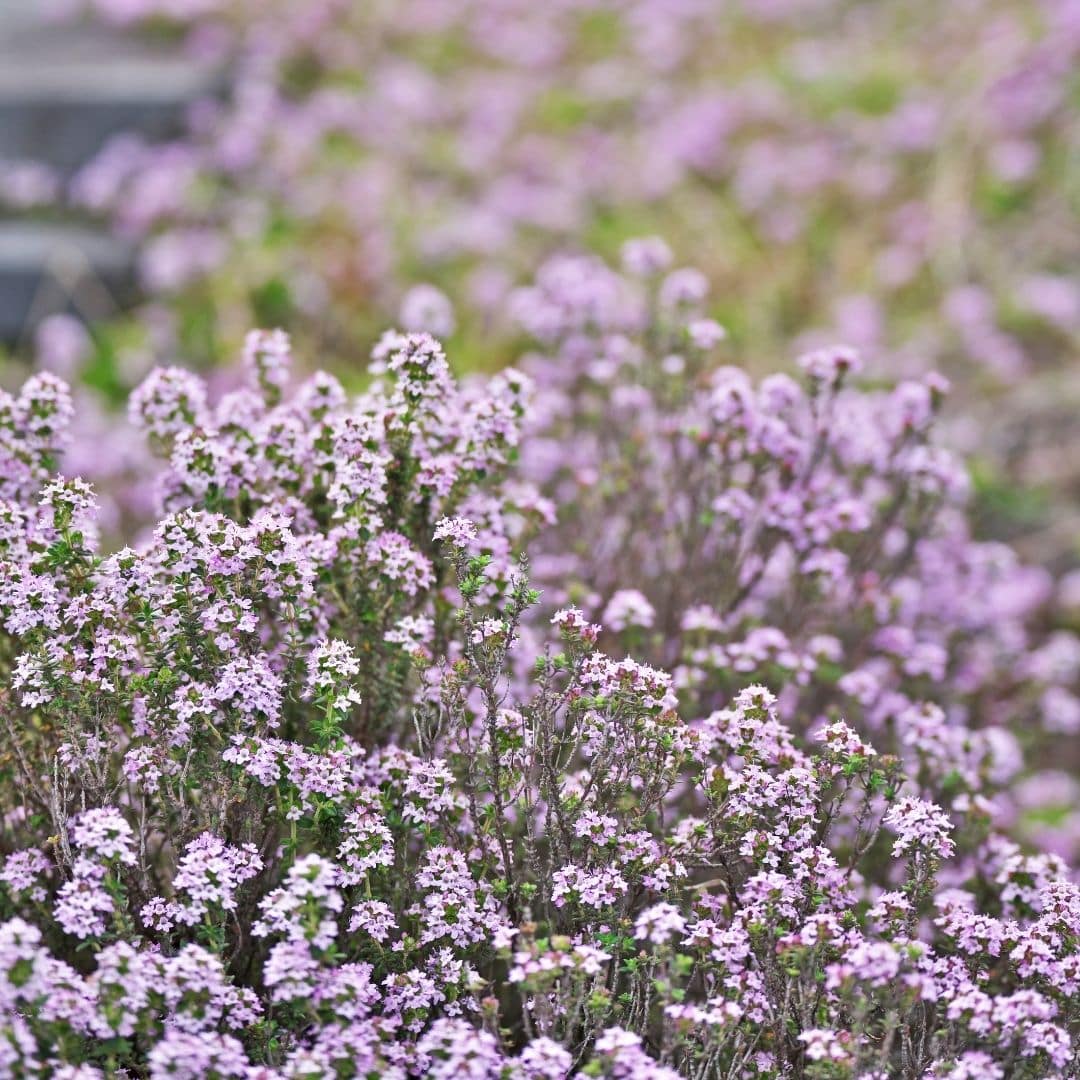Tired of wrestling with your mower every weekend and still ending up with patchy green? Creeping thyme is about to revolutionize your lawn game.
This aromatic, enchanting groundcover not only saves you time and money but transforms your yard into a vibrant, pollinator‑friendly haven. Ready to ditch the grass? Let’s dig in!
What Makes Creeping Thyme the Ultimate Grass Alternative?

Creeping thyme (Thymus serpyllum) is a low‑growing groundcover that forms a thick, aromatic carpet of tiny leaves and delicate flowers.
Its dense growth smothers weeds and creates a soft, resilient surface that’s both beautiful and functional.
It can handle some tough conditions
It thrives in poor, rocky soils and tolerates full sun as well as light shade, making it perfect for areas where grass struggles.
Beautiful blooms
Many varieties boast colorful blooms—from lavender to white—that turn your yard into a living tapestry.
It doesn’t require traditional mowing
Unlike traditional turfgrass, creeping thyme requires almost no mowing and very little fertilizer.
Natural pest repellent
Its natural oils even repel pests like mosquitoes and ticks, giving you a healthier, more enjoyable outdoor space.
It feels great under foot
Over time, this hardy herb establishes a uniform blanket that cushions footsteps and recovers quickly from light wear.
Gentle roots
Its shallow root system penetrates just enough to anchor the plant without creating deep tunnels beneath your feet like grass roots do.
Creeping Thyme: The King of Low‑Maintenance Appeal
One of the biggest reasons gardeners switch to creeping thyme is the massive time savings.
Unlike grass, which demands weekly mowing during the growing season, thyme only needs a light trim once or twice a year to stay tidy.
There’s no need for frequent watering, fertilizing, or dethatching chores that eat up your weekends.
Simply let it grow naturally, and it will stay healthy in most climates.
Maintenance is Easier With Creeping Thyme
- Mowing: None required beyond a light trim after flowering.
- Watering: Occasional deep watering during extended droughts, roughly every 10–14 days.
- Fertilizing: A light application of compost or balanced fertilizer in spring is all it takes.
- Weeding: Rare, as thyme’s dense mat chokes out invaders.
It’s a Water Saving Wonder
Creeping thyme thrives on neglect, making it ideal for water‑wise gardens.
Once established, its roots seek moisture far below the surface, reducing the need for supplemental irrigation.
By replacing thirsty turfgrass with thyme, you can cut outdoor water use by up to 75%—a win for your wallet and the planet.
Its ability to grow in poor soils also means less need for chemical fertilizers and soil amendments.
Key Perks
- Water Savings: Uses up to 75% less water than traditional lawns.
- Erosion Control: Dense mat prevents soil loss on slopes and bare patches.
- Pesticide Reduction: Natural oils deter pests, lowering chemical use.
- Carbon Capture: Living cover locks carbon in the soil.
Pollinator Paradise: Attract Bees and Butterflies
When creeping thyme blooms, it transforms your yard into a buzzing oasis.
Each tiny flower is a nectar‑rich feast for bees, butterflies, and other beneficial insects.
This groundcover can produce thousands of blossoms in a single season, offering continuous food for pollinators.
Plus, its low height keeps water from pooling on the blooms, ensuring pollinators find easy landing pads.
Why Pollinators Love Thyme
- Nectar Abundance: High nectar volume supports bee colonies.
- Extended Bloom: Flowers appear from late spring through summer.
- Butterfly Magnet: Certain varieties like Thymus praecox are especially attractive to butterflies.
- Habitat Creation: Provides shelter for ground‑nesting bees.
Last summer, I watched bees flock to my little thyme patch and marveled at the buzz of life under my feet.
There are Plenty of Varieties of Creeping Thyme to Suit Your Style
There are dozens of creeping thyme varieties, each with its own foliage color and flower hue.
Choosing the right type lets you customize your lawn’s look and bloom schedule.
Top Picks
- Thymus serpyllum ‘Elfin’: Tiny leaves and rose‑pink flowers.
- Thymus praecox ‘Coccineus’: Vivid red blooms that pop in the landscape.
- Thymus vulgaris ‘Minor’: Classic gray‑green foliage with lavender flowers.
- Thymus pseudolanuginosus: Silvery, woolly leaves and soft pink blossoms.
Mixing varieties can extend bloom time and add seasonal interest.
Step‑by‑Step Installation Guide
Planting creeping thyme is simpler than you think and doesn’t require heavy equipment.
Follow these steps to replace your grass with aromatic green carpet.
1. Site Preparation
- Clear existing grass and weeds using a sod cutter or organic herbicide.
- Loosen soil to 4 inches deep and remove rocks or debris.
- Amend with compost to improve drainage if needed.
2. Planting
- Space plugs or seeds 6–12 inches apart for quick coverage.
- Press plants gently into the soil and firm around the base.
3. Mulching and Watering
- Apply a thin layer of organic mulch to retain moisture and suppress weeds.
- Water deeply right after planting, then keep soil lightly moist for two weeks.
I’ll never forget the time I tore out my dandelion‑choked lawn and planted creeping thyme—it felt like I was planting a fragrant green carpet.
Caring for Your Thyme Lawn: Tips and Tricks
Once established, creeping thyme is almost carefree, but a little care boosts its health.
Follow these simple steps to keep your carpet lush and vibrant.
Allow your thyme lawn to rest after establishment and resist the urge to stomp on it until it fully roots in. Inspect your groundcover regularly for bare spots and fill them by planting new plugs in early fall or spring.
Watering Guidance
- Water deeply every 7–10 days during dry spells.
- Allow soil to dry out between waterings to prevent root rot.
Pruning and Trimming
- Trim after flowering to encourage denser growth.
- Use hedge shears or string trimmers set high.
Fertilizing Smartly
- Apply a light layer of compost in early spring.
- Avoid high‑nitrogen fertilizers that favor leaf over flower growth.
Early on, I did overwater my thyme, but learned that a light sprinkle every week was more than enough.
Handling Foot Traffic and Wear
Creeping thyme is surprisingly tough underfoot, but heavy wear areas need a plan.
Here’s how to keep high‑traffic spots healthy and attractive.
Foot traffic resilience varies by variety; choose Thymus serpyllum ‘Elfin’ for walkways. A quick mid‑season pruning also helps the mat recover faster from wear.
Traffic Tips
- Limit foot traffic during establishment to prevent uprooting.
- Consider adding stepping stones or a gravel path in busiest zones.
- Rotate seating or play areas to spread wear evenly.
With proper planning, your thyme lawn can handle picnics, kids’ play, and pet strolls without patching.
Combining Creeping Thyme with Hardscaping
Creeping thyme pairs beautifully with stones, bricks, and wood for a charming cottage look.
Use it to soften edges, fill gaps, and add color to patios and walkways.
Design Ideas
- Plant thyme between pavers for a living, scented pathway.
- Use it to border gravel driveways, reducing dust and erosion.
- Combine with lavender and sage for complementary textures and scents.
Its low height keeps your stones visible while preventing soil from washing into crevices during rain.
This living groundcover makes your hardscape elements blend seamlessly into the garden environment.
Troubleshooting Common Creeping Thyme Issues
Even hardy creeping thyme can run into problems if conditions go awry.
Here’s how to diagnose and fix the most frequent issues gardeners face.
Patchy Growth
- Cause: Improper planting spacing or compacted soil.
- Fix: Loosen soil and fill gaps with fresh plugs.
Pests and Diseases
- Suspects: Spider mites, root rot in overly wet soil.
- Solve: Improve air circulation and adjust watering schedule.
Flowering Failures
- Reason: Too much shade or high‑nitrogen fertilizer.
- Solution: Trim back overhanging branches and switch to balanced feeding.
Regularly pruning spent blooms can also encourage a fresh flush of flowers.
Rotate the thyme bed every few years by lifting and dividing overcrowded sections.
Cost Comparison: Thyme vs. Traditional Grass
Initial investment in creeping thyme may seem higher, but long‑term savings are significant.
Let’s break down the numbers to see why thyme often wins in the wallet department.
Upfront Costs
- Creeping Thyme Plugs: $1–$3 per plug, covering 1–2 square feet.
- Grass Seed: $0.15–$0.30 per square foot for seed and preparation.
Maintenance Expenses
- Thyme: Minimal water, no mowing, light fertilizer once a year.
- Grass: Regular mowing, fertilizers, weed controls, and reseeding each season.
Long‑Term Savings
- Water Bill: Up to 75% reduction in irrigation costs.
- Equipment: No need for mower, aerator, or dethatcher maintenance.
Over a decade, homeowners can save hundreds of dollars on both utilities and equipment maintenance.
Plus, thyme’s low chemical requirements mean fewer spending on herbicides and fertilizers.
Wrapping It Up
Creeping thyme offers a stunning, eco‑friendly alternative to high‑maintenance turf that beautifies your yard year after year.
By saving time, money, and natural resources, it truly beats grass every time.
Ready to ditch the mower and embrace a fragrant, pollinator‑rich lawn? Plant your first thyme plug this weekend and watch your garden thrive.
Bonus: Your Top 5 Questions Answered
1. Can creeping thyme handle heavy foot traffic year‑round?
Yes, sturdy varieties like Thymus serpyllum ‘Elfin’ tolerate light to moderate foot traffic.
For high-traffic zones, add stepping stones and rotate use to prevent wear.
2. Does creeping thyme attract pests to my yard?
Quite the opposite—its aromatic oils naturally repel mosquitoes, ticks, and even rabbits.
You’ll enjoy fewer bugs without spraying chemicals.
3. How long until creeping thyme fully covers an area?
With plugs spaced 6–12 inches apart, you can expect solid coverage in 6–12 months.
Seed mixes may take longer and can result in uneven patches.
4. Can I mow thyme if needed?
You can lightly trim thyme after flowering with a string trimmer set high or a lawn mower on its highest deck.
Avoid frequent mowing to preserve flowers and plant health.
5. What climates suit creeping thyme best?
Creeping thyme thrives in USDA zones 5–9, handling hot summers and cold winters with equal ease.
Some hardy cultivars even survive in zone 4 with proper winter mulching.

